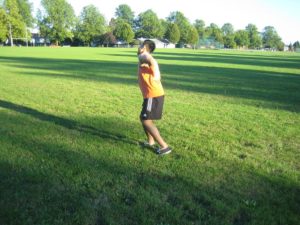Hip bursitis is characterized by inflammation of the bursa or small sac of fluid between the bone and tendon that prevents friction. There are instances in which the bursa can end up inflamed, triggering hip pain.
It is important to note that there are several bursas found in the hip joint such as:
- Trochanteric bursa – found outside of the hip amidst the greater trochanter and attachment points of the gluteal muscles
- Ischial bursa – found amidst the hamstring tendons and base of the pelvis
- Gluteus medius bursa – this is a small-sized bursa amidst the gluteus medius muscle and greater trochanter
Anti-inflammatory medications might be prescribed by the doctor to reduce the pain and inflammation. - Iliopsoas bursa – positioned amidst the iliopsoas muscles at the front part of the hip joint and underlying bone
In most cases, the trochanteric bursa is typically affected by hip bursitis. It can be damaged via a direct strike to the bursa such as a fall onto the exterior hip or repetitive friction from the overlying tendons and muscles.
Risk factors
There are several factors that increases the risk for developing hip bursitis such as:
- Falling onto the side of the hip
- Biomechanical issues such as overpronation
- Weak hip abductors particularly the gluteus medius
- Tight structures around the hip such as the hip flexors, iliotibial band and hamstrings
- Bone spurs
What are the indications?
- Pain on the exterior of the hip that is aggravated by running, getting out of a car or climbing stairs
- Pain gradually worsens and the area on the outside part of the hip is tender when pressed
- Pain that radiates to the exterior of the thigh
Management
Initial care
The individual should rest until the pain settles. Apply an ice pack to minimize the pain and inflammation. It should be applied for 10 minutes every hour. In addition, the individual should only run on flat, even terrain to minimize the pressure from the bursa.
Medical care
Anti-inflammatory medications might be prescribed by the doctor to reduce the pain and inflammation. An X-ray or MRI might be requested to confirm if the injury is not due to a bone spur.
Physical therapy is recommended to correct any muscular imbalances that added up to the condition. Orthotic insoles for the feet might be recommended by correcting poor foot biomechanics.
In some cases, ultrasound is used to minimize the pain and inflammation. Drainage might also be required which involves the insertion of a needle into a bursa. A steroid injection might be prescribed along with rest. Additionally, an individual with a long-term injury might require surgery if conservative measures are not effective.

